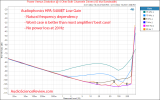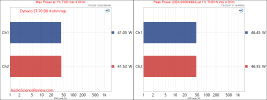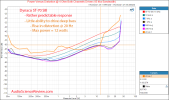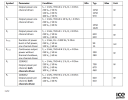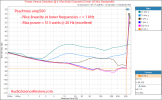D
Deleted member 58670
Guest
When amps are tested here at ASR as well as other places, output power is one of the things measured. I can't however find any information about the duration of such a measurement. They are also conducted at 1 kHz only, if I'm not mistaking?
Now - consider we want our amps to drive home theater subwoofers covering the 10-80 Hz range. Typical action movie soundtracks contain a lot of more of less continuous low frequency signals at very high levels. An example I like to use is the scene from Interstellar where Matthew McConaughey's character fly into the black hole. In that scene there's extremely high level in the LFE channel around 25-30 Hz (I think - will check this), and it literally lasts for minutes. The first time I saw that movie at home, I had to pause it just to check if nothing had caught fire!
The question is - can our amps deliver high power at low frequencies for an extended period of time, which will be the requirement for home theater subwoofers?
I set out to do some experiments on this topic and get some answers. In the next post I will describe a proposal on how it could be done. Comments, corrections, input of any kind is more than welcome.
Now - consider we want our amps to drive home theater subwoofers covering the 10-80 Hz range. Typical action movie soundtracks contain a lot of more of less continuous low frequency signals at very high levels. An example I like to use is the scene from Interstellar where Matthew McConaughey's character fly into the black hole. In that scene there's extremely high level in the LFE channel around 25-30 Hz (I think - will check this), and it literally lasts for minutes. The first time I saw that movie at home, I had to pause it just to check if nothing had caught fire!
The question is - can our amps deliver high power at low frequencies for an extended period of time, which will be the requirement for home theater subwoofers?
I set out to do some experiments on this topic and get some answers. In the next post I will describe a proposal on how it could be done. Comments, corrections, input of any kind is more than welcome.

